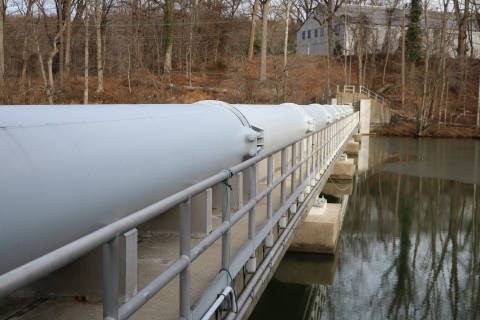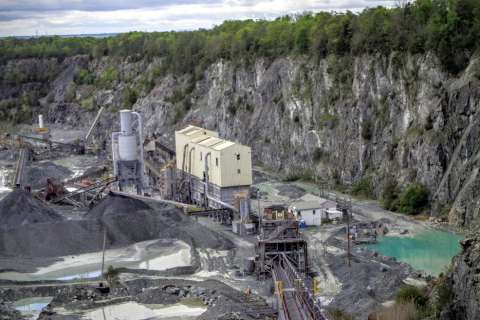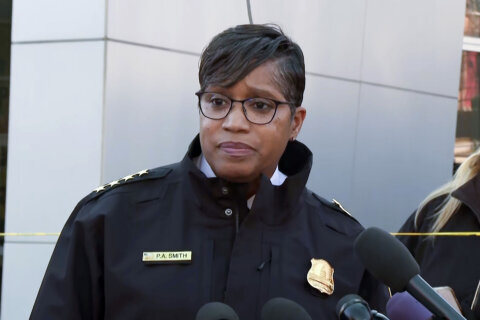WASHINGTON – As a crane in the backdrop slowly lifted a 90-ton steel drill head from a shaft at Poplar Point, DC Water said that it was one step closer to completing its federally-mandated long-term project to reduce the amount of raw sewage in local rivers.
“We went underneath the Anacostia River, the 11th Street Bridge and under big utilities, including the Green Line of the Metro,” said Carlton Ray, director of the DC Water Clean Rivers Project.
A tunnel boring machine the length of a football field and nicknamed Nannie recently completed a tunnel that runs from the RFK Stadium area to Poplar Point, in the 2300 block of South Capitol Street Southeast.
The new tunnel connects with an already-completed 4-mile tunnel to the Blue Plains Wastewater Treatment Plant.
In March 2018, sewage that currently flows from 15 overflow pipes into the Anacostia will be diverted into smaller tunnels. Before returning to the Potomac River, “that sewage will drop one hundred feet into this tunnel system, and be conveyed to Blue Plains, to be properly treated,” Ray said.
Before 2025, another tunnel is expected to be completed to deal with combined sewer overflow into the Potomac River, as well as the Northeast Boundary Tunnel, which will remove sewage from flood-prone areas along Rhode Island Avenue.
That tunnel will connect to the just-completed Anacostia River Tunnel.
90 tons of steel named Nannie lifted from shaft. @dcwater tunnel boring project finished, between RFK and Poplar Point. pic.twitter.com/zW4J13oiur
— Neal Augenstein (@AugensteinWTOP) January 5, 2017








